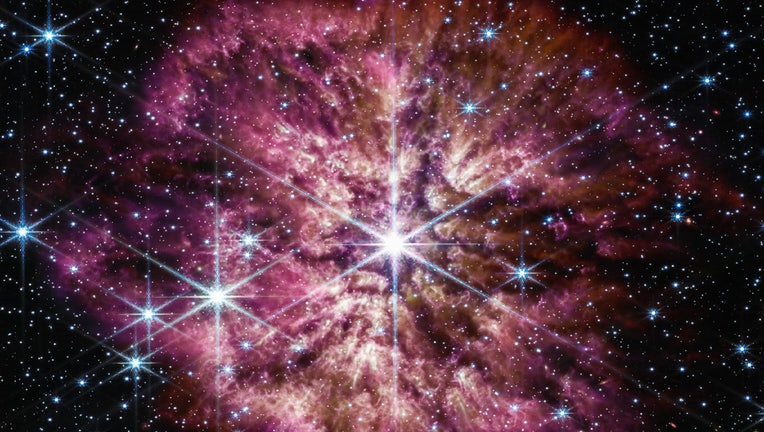NASA's Webb Telescope captures rarely seen star on cusp of death

The luminous, hot star Wolf-Rayet 124 (WR 124) is prominent at the center of the James Webb Space Telescope’s composite image combining near-infrared and mid-infrared wavelengths of light from Webb’s Near-Infrared Camera and Mid-Infrared Instrument.C
NEW YORK - NASA has released a new photo from the Webb Space Telescope that captures the rare sight of a star just before it explodes into a supernova.
NASA released the picture of the star at SXSW in Austin, Texas on Tuesday.
The observation was among the first made by Webb following its launch in late 2021. Its infrared eyes observed all the gas and dust flung into space by a huge, hot star 15,000 light-years away. A light-year is about 5.8 trillion miles.
RELATED: See Mercury, Venus, Mars, Jupiter and Uranus at the same time
The star, known as WR 124, is in the constellation Sagittarius and is a Wolf-Rayet star and is among the most luminous, massive, and briefly detectable stars known.
"Wolf-Rayet stars are in the process of casting off their outer layers, resulting in their characteristic halos of gas and dust," NASA said in a statement on its website. "The star WR 124 is 30 times the mass of the Sun and has shed 10 Suns’ worth of material – so far. As the ejected gas moves away from the star and cools, cosmic dust forms and glows in the infrared light detectable by Webb."
RELATED: 'Comet of a decade' to whiz past Earth in likely first visit in 4.5 billion years
Such a transformation occurs only with some stars and normally is the last step before they explode, going supernova, according to scientists.
"We’ve never seen it like that before. It’s really exciting," said Macarena Garcia Marin, a European Space Agency scientist who is part of the project.
With the Associated Press.

